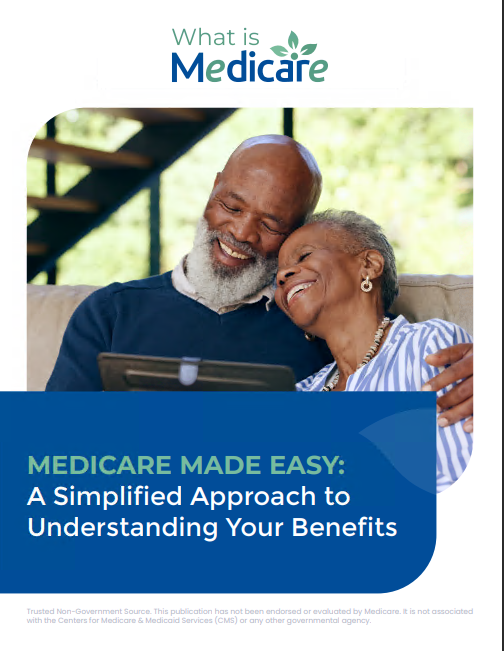Key Takeaways
- Hidden costs within Medicare coverage can significantly impact overall healthcare expenses.
- Understanding potential out-of-pocket expenses helps in making informed decisions about Medicare plans.
Why You Shouldn’t Overlook the Hidden Costs of Medicare Coverage
When evaluating Medicare coverage, it’s easy to focus solely on the premiums and benefits of the plan. However, there are several hidden costs that can catch beneficiaries off guard, potentially leading to unexpected financial strain. These costs, which may not be immediately apparent, can accumulate over time and impact your overall healthcare budget. Understanding these hidden costs is crucial for making informed decisions about your Medicare coverage and ensuring that you are adequately prepared for the financial aspects of your healthcare.
Out-of-Pocket Expenses: The Unseen Burden
One of the most significant hidden costs associated with Medicare coverage is out-of-pocket expenses. These are costs that are not covered by your Medicare plan and must be paid directly by you. Out-of-pocket expenses include deductibles, copayments, and coinsurance. For example, Medicare Part A covers hospital stays, but you may still be responsible for the deductible, which can be over $1,600 per benefit period in 2024. Similarly, Medicare Part B covers outpatient services, but beneficiaries are required to pay 20% of the Medicare-approved amount for most doctor services, outpatient therapy, and durable medical equipment.
These costs can add up, especially for those who require frequent medical care or have chronic conditions. It’s important to review your Medicare plan’s Summary of Benefits to understand the out-of-pocket costs you might incur.
The Cost of Prescription Drugs
Another area where hidden costs can arise is prescription drug coverage. Medicare Part D provides coverage for prescription medications, but the cost of drugs can vary widely depending on the specific plan, the medications you need, and the pharmacy you use. The “donut hole” or coverage gap is a notorious aspect of Part D that can significantly increase out-of-pocket costs for prescription drugs. While the donut hole has been gradually closing, beneficiaries may still face higher costs until they reach the catastrophic coverage phase.
Additionally, some medications may require prior authorization or may not be covered at all, leading to unexpected out-of-pocket expenses. It’s essential to review your Part D plan’s formulary to ensure that your medications are covered and to understand the cost-sharing requirements.
Medicare Advantage Plans: Watch Out for Hidden Costs
Medicare Advantage (Part C) plans are an alternative to Original Medicare, offered by private insurance companies. While these plans often include additional benefits like dental, vision, and hearing coverage, they can also come with hidden costs that beneficiaries might not anticipate. For instance, Medicare Advantage plans often have networks of doctors and hospitals, and seeing a provider outside of this network can result in higher costs or no coverage at all.
Moreover, Medicare Advantage plans may have different cost-sharing structures compared to Original Medicare, including higher copayments or coinsurance for certain services. Some plans also have an annual out-of-pocket maximum, which is a safety net that limits how much you spend on covered services each year. However, costs for services not covered by the plan, such as long-term care, do not count toward this limit, leaving beneficiaries responsible for potentially significant expenses.
Long-Term Care: A Major Uncovered Expense
One of the most significant hidden costs that many Medicare beneficiaries overlook is long-term care. Medicare generally does not cover long-term care, also known as custodial care, if that is the only care you need. This includes services like help with daily activities such as bathing, dressing, or eating. Long-term care can be incredibly expensive, with costs ranging from $4,500 to $10,000 per month depending on the type of care and location.
For those who anticipate needing long-term care, it may be necessary to consider additional insurance options, such as long-term care insurance, or to set aside savings specifically for this purpose. Without proper planning, the costs of long-term care can quickly deplete savings and create a financial burden.
Medical Equipment and Supplies: Not Always Fully Covered
Medical equipment and supplies, such as wheelchairs, walkers, and oxygen equipment, are often necessary for managing chronic health conditions. While Medicare Part B covers durable medical equipment (DME), it only pays for 80% of the Medicare-approved amount after the deductible is met. The remaining 20% must be paid out-of-pocket, which can be costly, especially for high-priced items.
In some cases, Medicare may not cover certain types of equipment or supplies at all, depending on the specific circumstances and the medical necessity of the item. This can result in significant out-of-pocket expenses for beneficiaries who need these items to maintain their quality of life.
Surprise Medical Bills: A Costly Surprise
Even with Medicare coverage, beneficiaries can still be hit with surprise medical bills. These can occur when you receive care from a provider who does not accept Medicare or when services are provided that are not covered by Medicare. For example, if you need emergency care while traveling outside the United States, Medicare generally does not cover these expenses, leading to potentially high out-of-pocket costs.
To avoid surprise medical bills, it’s important to verify that your providers accept Medicare and to understand what services are and are not covered under your plan. If you plan to travel internationally, consider purchasing additional travel health insurance to cover potential medical expenses abroad.
Preventive Services: Not Always Cost-Free
Medicare covers a wide range of preventive services, such as screenings, vaccines, and annual wellness visits, often at no cost to the beneficiary. However, there can be hidden costs associated with these services. For instance, if a preventive service leads to additional tests or procedures that are not covered as preventive, you may be responsible for the associated costs.
Additionally, some services may only be covered once within a specific time frame, and if you receive them more frequently, you could incur out-of-pocket costs. It’s crucial to understand the details of your Medicare coverage for preventive services to avoid unexpected expenses.
How Income Affects Your Medicare Costs
Your income can also impact your Medicare costs in ways that might not be immediately obvious. For instance, if your income is above a certain threshold, you may be required to pay higher premiums for Medicare Part B and Part D. This surcharge, known as the Income-Related Monthly Adjustment Amount (IRMAA), can significantly increase your overall Medicare costs.
IRMAA is determined based on your income from two years prior, so it’s important to consider how changes in your income might affect your future Medicare costs. Beneficiaries who anticipate higher income in retirement should plan accordingly to avoid unexpected increases in their Medicare premiums.
The Cost of Not Having Supplemental Insurance
While Medicare covers many healthcare expenses, it does not cover everything. As a result, many beneficiaries choose to purchase supplemental insurance, such as Medigap, to help cover the costs that Medicare does not. However, not having supplemental insurance can be a hidden cost in itself.
Without supplemental insurance, beneficiaries are responsible for all out-of-pocket expenses, which can be substantial. For example, if you have a hospital stay that results in significant copayments and coinsurance, the lack of supplemental coverage could result in high out-of-pocket costs that could have been mitigated by a Medigap plan.
Planning Ahead to Manage Hidden Costs
To effectively manage the hidden costs of Medicare, it’s essential to plan ahead. This involves reviewing your current and future healthcare needs, understanding the costs associated with different Medicare plans, and considering additional insurance options, such as Medigap or long-term care insurance.
It’s also important to regularly review your Medicare coverage and make adjustments as needed. For instance, during the annual open enrollment period, you have the opportunity to switch Medicare plans, which can help you better manage your healthcare costs. By staying informed and proactive, you can minimize the impact of hidden costs on your overall healthcare budget.
Unexpected Costs Can Add Up
The hidden costs of Medicare coverage can be substantial and may come as a surprise to many beneficiaries. From out-of-pocket expenses and prescription drug costs to the potential need for long-term care, these hidden costs can significantly impact your financial stability during retirement. By understanding and planning for these costs, you can better prepare for the financial realities of Medicare coverage and make informed decisions that align with your healthcare needs and budget.
Contact Information:
Email: [email protected]
Phone: 2095559012









